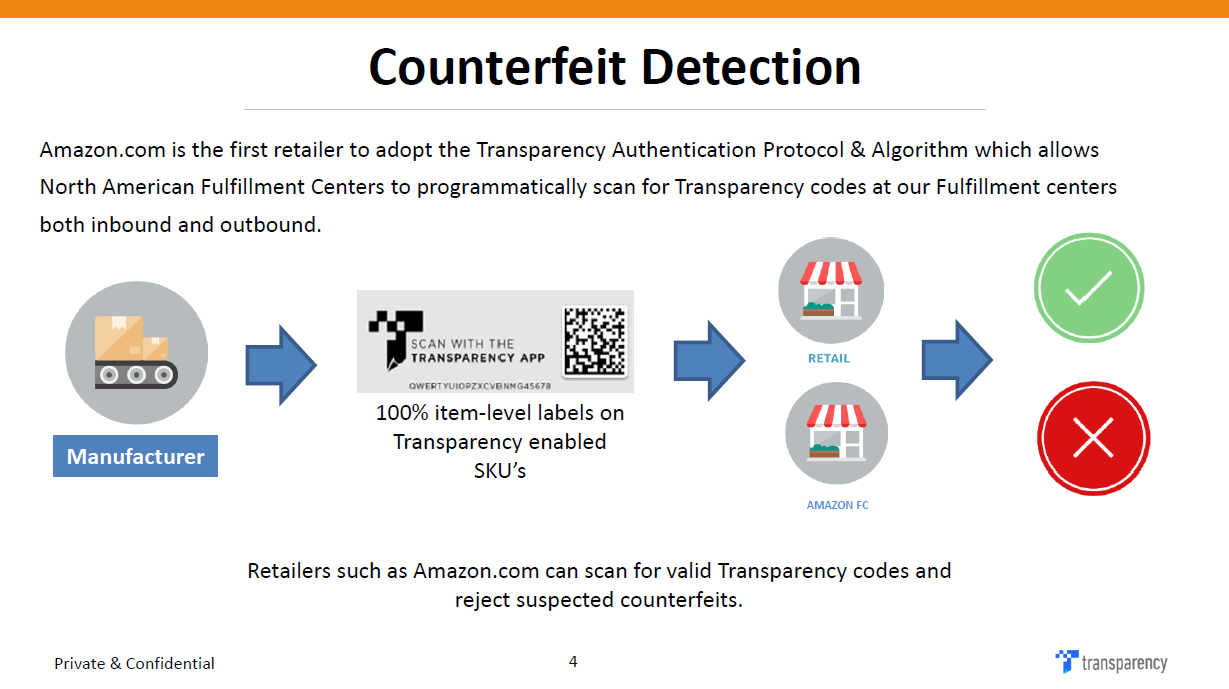Amazon's Transparency Program to Prevent Counterfeit Merchandise Seeks to Add 1,000 brands in 2018
 |
| Amazon Transparency Program |
According to Amazon, there are three types of brands that need this protection:
- Brands that value the authenticity of their products and can be negatively impacted by counterfeit merchandise.
- Brands with product manufactured through “3rd shift” or secondary factories.
- Brands launching new products likely to attract counterfeit copycats.
This cool program uses the Amazon app to provide consumers with information about where the product was manufactured and other details that validate the authenticity. The consumer uses the Smartphone app to take a picture of the 2D barcode and automatically sees the information associated with that SKU.
 |
| Transparency Label |
The Transparency Program identifier label looks like this:
Amazon provides a unique 26 digit alphanumeric code related to the authenticity information for each product enrolled in the program. The manufacturer applies the code to the product prior to delivery so the Amazon fulfillment centre is able to validate authenticity during the product acceptance phase. The manufacturer receives global protection by applying the code to each product no matter which channel it sells through. Consumers use the code to verify the product no matter where it is purchased, but will be assured of accredited merchandise when they acquire the product through Amazon.
According to Amazon, the program will add between $0.01-$0.05 to the cost of each item depending on the volume. Amazon product acceptance protocols are expected to discover most counterfeit merchandise, however, consumers may also report vendors selling counterfeit product. Once registered, Amazon will notify all sellers that Transparency codes are required and will not accept product whether sold by the brand, a third-party seller or Amazon Retail.
Amazon Marketplace features millions of independent vendors across the globe who list hundreds of millions of items. Since the launch 10+ years ago, Amazon Marketplace accounts for over half the company's e-commerce volume. This rapid expansion has forced Amazon to deal with a surge in counterfeits and unauthorized selling.
CNBC recently told the story of Wee Urban owner Holly MacLean. After reaching a peak of $500,000 in baby clothing sales on Amazon Marketplace in 2016, she saw revenue plunge 80 percent in 2017 because of counterfeit and copyright infringement issues.
According to CNBC, Amazon has invited "early adopters" to trial the Transparency program for their products. Bang & Olufsen, Victorinox Swiss Army and 3M are said to be among those invited.

Amazon plans to roll Transparency out across all Amazon marketplaces and any brand by the end of 2018. Those interested in learning more can email Amazon at:

Enjoyed this read.For more information visit Amazon Restricted Categories Approval
ReplyDelete